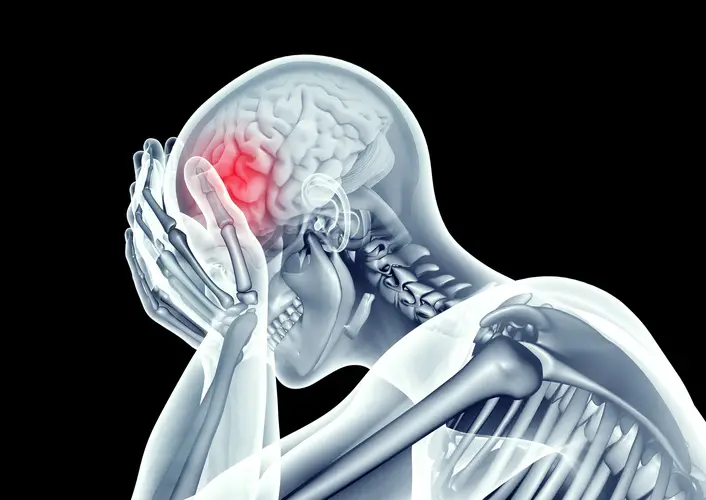Contents
Introduction

Prolonged Exposure Therapy (PE): Techniques, Applications, and Effectiveness
Prolonged Exposure Therapy (PE) is an evidence-based cognitive-behavioral treatment designed primarily to address post-traumatic stress disorder (PTSD). PE aims to help individuals confront and process traumatic memories, reducing the distress associated with them. This therapy focuses on gradually exposing clients to feared memories and situations, enabling them to gain control over their trauma-related symptoms and improve overall functioning.
This article offers an in-depth exploration of Prolonged Exposure Therapy, detailing its core techniques, applications for various conditions, and its effectiveness. It also addresses common criticisms and provides an evaluation of its impact on mental health and personal recovery.
What is Prolonged Exposure Therapy (PE)?
Prolonged Exposure Therapy (PE) is a structured therapeutic approach designed to help individuals with PTSD, process traumatic memories and reduce avoidance behaviors. Developed by Edna Foa in the 1990s, PE is grounded in cognitive-behavioral principles and involves two main components: imaginal exposure (revisiting the trauma memory) and in vivo exposure (facing avoided situations related to the trauma). The therapy aims to help clients confront their fears and gradually reduce the intensity of their distressing symptoms.
PE operates on the premise that avoidance of trauma-related memories and situations maintains PTSD symptoms. By encouraging gradual confrontation of these memories and situations, PE helps individuals break the cycle of avoidance and reduce their emotional distress.
Why is PE Important?
Prolonged Exposure Therapy is important because it provides a systematic and effective method for addressing PTSD, a condition that can severely impact an individual’s daily functioning and quality of life. PE helps individuals process traumatic experiences, reducing symptoms such as intrusive memories, avoidance, and heightened arousal. The therapy’s structured approach allows clients to gradually face their fears in a controlled manner, leading to significant reductions in PTSD symptoms and improvements in overall mental health and well-being.
Techniques Used in Prolonged Exposure Therapy
- Imaginal Exposure: Involves repeatedly revisiting and recounting the traumatic event in a safe, controlled setting. The goal is to reduce the emotional intensity and distress associated with the memory, allowing the individual to process the trauma more effectively over time.
- In Vivo Exposure: Entails gradual and systematic confrontation with real-life situations or objects that the person has been avoiding due to trauma-related fears. This process helps to reduce avoidance behaviors and anxiety by facilitating direct, controlled engagement with previously avoided stimuli.
- Breathing Retraining: Focuses on teaching controlled breathing techniques to manage and reduce anxiety symptoms that arise when faced with trauma reminders. This practice helps individuals regulate their physiological responses and maintain calmness in stressful situations.
- Cognitive Processing: Involves identifying and challenging distorted or unhelpful beliefs related to the trauma. By addressing these negative thinking patterns, the therapy aims to reshape the individual’s perception of the traumatic event and its impact, promoting healthier cognitive processing.
- Emotional Processing: Encourages individuals to fully experience and express their emotions related to the trauma. This technique supports emotional integration and healing by allowing individuals to process and make sense of their feelings, leading to reduced emotional distress and increased psychological resilience.
Understanding How Prolonged Exposure Therapy Works
Prolonged Exposure Therapy is grounded in associative learning theory, which suggests that the brain forms connections between stimuli that occur together. Ivan Pavlov famously demonstrated this concept with his experiment involving dogs. He rang a bell before presenting food to the dogs, and they began to salivate at the sound of the bell because they learned to associate it with food. To disrupt this association, Pavlov rang the bell without providing food. Over time, the dogs stopped salivating in response to the bell, illustrating how the brain can unlearn associations.
Simple Overview
When experiencing fear, it’s natural to want to escape from whatever is causing it. For individuals with PTSD, this often leads to avoiding certain people, places, or things. While this avoidance may provide temporary relief, it can actually worsen anxiety over time. The primary goal of Prolonged Exposure (PE) Therapy is to confront this avoidance behavior. At the start of PE, you’ll collaborate with your therapist to create a list of things you are avoiding due to fear. This list will include all the trauma reminders and situations you are reluctant to face.
You’ll begin working through the list with your therapist, starting with the least frightening items. Gradually, you’ll progress to more challenging situations. This process helps you practice confronting and managing trauma reminders that you typically avoid in your daily life.
Real-Life Example: A client with PTSD from a car accident might start by recalling the accident in detail during therapy sessions (imaginal exposure) and then gradually drive short distances or visit places that remind them of the accident (in vivo exposure). This process helps them reduce their fear and avoidance behaviors, ultimately leading to reduced PTSD symptoms and increased confidence in handling similar situations.
Critical Concepts
- Trauma Memory Reprocessing: This involves systematically revisiting and recounting traumatic experiences during therapy sessions, allowing clients to confront and re-evaluate their memories. The goal is to help clients integrate these memories into their broader life narrative, which reduces their emotional impact. This process can lead to a significant decrease in PTSD symptoms by diminishing the distress associated with the traumatic memories and enhancing overall psychological well-being.
- Contextual Engagement: This refers to the gradual and structured approach of facing real-world situations or environmental cues associated with the trauma. By systematically exposing clients to these triggers in a controlled and safe manner, this technique helps reduce avoidance behaviors. Over time, clients develop increased tolerance and resilience to these triggers, which fosters greater engagement in daily activities and supports overall recovery.
- Emotional Desensitization: This concept involves the gradual reduction in the emotional intensity of trauma-related stimuli through repeated, controlled exposure. By repeatedly confronting feared stimuli, clients experience a decrease in their emotional reactivity and distress. This reduction in emotional responsiveness helps clients manage their trauma more effectively and enhances their ability to cope with anxiety and fear in everyday situations.
- Cognitive Processing Enhancement: This technique focuses on addressing and modifying maladaptive thoughts and beliefs that have developed as a result of the trauma. By engaging in cognitive processing, clients are able to challenge and reframe distorted thoughts related to their trauma. This approach improves their cognitive flexibility and helps them develop healthier thinking patterns, which can lead to better management of trauma symptoms and improved overall psychological resilience.
Relationship Between PE & Exposure Therapy
Prolonged Exposure Therapy (PE) and Exposure Therapy share foundational principles but differ in focus. Both methods involve confronting feared stimuli to reduce distress, but PE is specifically designed for PTSD and includes imaginal and in vivo exposure techniques to address trauma-related symptoms. Exposure Therapy is a broader category that includes various exposure methods for treating anxiety and trauma. It applies to a range of disorders beyond PTSD, using techniques like systematic desensitization and flooding to reduce avoidance behaviors and anxiety.
Both PE and Exposure Therapy are grounded in cognitive-behavioral principles, emphasizing the role of exposure in diminishing fear and distress. They work on the premise that confronting feared stimuli reduces avoidance and helps clients realize that their fears are less threatening. PE is a specialized form of Exposure Therapy focused on trauma, whereas Exposure Therapy covers a wider range of anxiety and phobia treatments. This makes PE distinct in its structured approach to processing traumatic memories and reducing PTSD symptoms.
Notable Figures in PE
Edna B. Foa: Developer of Prolonged Exposure Therapy (PE), Foa’s work focuses on treating PTSD using structured exposure techniques. Her pioneering research established PE as a leading approach for trauma treatment, emphasizing the role of gradual confrontation of traumatic memories to reduce distress and improve functioning.
Michael J. Kozak: A prominent contributor to the development and empirical validation of PE, Kozak’s research has significantly advanced the understanding of exposure-based therapies. His work has played a crucial role in refining PE techniques and demonstrating their effectiveness in clinical settings, enhancing its application for treating trauma.
Barbara Olasov Rothbaum: A key researcher and practitioner of PE, Rothbaum has extensively studied its effectiveness across various trauma contexts. Her contributions have expanded the clinical utility of PE, providing insights into its application for different populations and trauma types, and validating its efficacy in real-world settings.
Edna B. Foa- Image Source: eurekalert.org

Theories Influenced by PE
- Trauma-Focused Cognitive-Behavioral Therapy (TF-CBT): Combines cognitive-behavioral techniques with exposure strategies to treat trauma in children and adolescents. TF-CBT incorporates gradual exposure to traumatic memories and cognitive restructuring to address distorted thoughts, aiming to reduce trauma-related symptoms and support emotional healing.
- Compassion-Focused Therapy (CFT): Developed by Paul Gilbert, CFT merges compassion and mindfulness strategies with exposure techniques. CFT integrates exposure principles from PE with practices aimed at fostering self-compassion and managing emotional regulation, enhancing overall emotional resilience and well-being.
- Acceptance and Commitment Therapy (ACT): Focuses on helping individuals accept their thoughts and feelings rather than avoiding them. ACT employs mindfulness and values-based actions, integrating exposure principles to increase psychological flexibility and improve engagement with life values, ultimately promoting mental health and well-being.
Applications of PE in Treating Mental Health Disorders

Post-Traumatic Stress Disorder
PE is highly effective in treating PTSD by helping individuals process and reduce distress related to traumatic memories through structured exposure techniques. The therapy aims to decrease avoidance behaviors and reduce the intensity of trauma-related symptoms.
Example: A client with PTSD from military combat might engage in imaginal exposure by vividly recounting their combat experiences during therapy sessions, which helps in reducing the emotional charge of the memories. They might also undergo in vivo exposure by gradually confronting real-life situations that remind them of the trauma.
Image Source: progress.im

Acute Stress Disorder (ASD)
PE can be utilized to address acute stress reactions and prevent the development of PTSD by using early exposure techniques. The goal is to reduce initial distress and prevent the progression of symptoms.
Example: A client experiencing ASD after a natural disaster might use in vivo exposure to gradually engage with reminders of the disaster, such as visiting affected areas or discussing the event in a safe setting. They might also practice imaginal exposure to process and articulate their traumatic memories.
Image Source: coloradoanxietycenter.com

Complex PTSD
PE can address symptoms of complex PTSD, which includes prolonged exposure to trauma and difficulties in emotional regulation. The therapy helps individuals confront their traumatic memories while also integrating strategies to manage complex symptoms.
Example: A client with complex PTSD might engage in imaginal exposure to address memories of prolonged abuse, allowing them to confront and process these experiences in a controlled environment. Additionally, they might use behavioral activation to increase engagement in safe, valued activities that promote positive experiences and emotional regulation.
Image Source: takechargeinc.net
Common Myths About PE
| Myth | Clarification |
| PE is only for severe PTSD cases. | PE is effective for various levels of PTSD severity, including mild to moderate cases. It can also be used as a preventive measure for individuals at high risk of developing PTSD. |
| PE means re-experiencing trauma will make symptoms worse. | PE is designed to reduce symptoms by gradually processing trauma. The exposure is controlled and systematic, leading to symptom relief as clients become less sensitive to trauma reminders. |
| PE requires clients to confront their trauma immediately. | PE involves gradual exposure to trauma-related memories and situations. The process is paced according to the client’s readiness, starting with less distressing elements and progressively addressing more challenging aspects. |
| PE doesn’t involve any cognitive work. | While PE primarily focuses on exposure, it often incorporates cognitive strategies. This includes addressing distorted thoughts and beliefs related to the trauma, helping to modify unhelpful thinking patterns that contribute to distress. |
Criticisms of Prolonged Exposure Therapy (PE)
- Intensity of Exposure: Some critics argue that the exposure component of PE can be overwhelming or distressing for clients, particularly those with severe trauma. The intensity of confronting traumatic memories requires careful management and support to prevent excessive emotional distress and ensure the therapy remains beneficial. Therapists must monitor clients closely and adjust the intensity of exposure based on individual needs and responses.
- Potential for Re-Traumatization: There is concern that revisiting traumatic memories during PE could lead to re-traumatization or an increase in distress for some individuals. It is crucial that exposure exercises are conducted in a supportive and controlled manner to mitigate the risk of worsening symptoms. Proper preparation, pacing, and therapeutic support are essential to manage potential re-traumatization.
- Variability in Outcomes: While PE has proven effective for many individuals, not all may respond equally well to the therapy. Variability in treatment outcomes highlights the importance of personalized approaches tailored to each client’s unique experiences and needs. Continuous evaluation and adaptation of the therapy are necessary to address differences in response and effectiveness.
- Complexity of Implementation: Implementing PE effectively requires therapists to possess advanced skills and knowledge to manage exposure techniques properly. The complexity of delivering exposure therapy may necessitate specialized training and resources to ensure that therapists are well-equipped to handle the nuanced aspects of the therapy and provide adequate support to clients.
Conclusion
Prolonged Exposure Therapy (PE) offers a structured and evidence-based approach for treating Post-Traumatic Stress Disorder (PTSD) and related trauma disorders. By emphasizing the gradual confrontation of traumatic memories and avoidance behaviors, PE helps individuals process their trauma in a controlled manner, thereby reducing distress and facilitating emotional recovery. The therapy involves carefully designed exposure exercises to help clients face their fears and diminish the power of traumatic memories over time. Despite some criticisms regarding its intensity and the challenges of implementation, PE remains a highly effective tool in trauma therapy.
References
- Foa, E. B., & Kozak, M. J. (1986). Emotional processing of fear: Exposure to corrective information. Psychological Bulletin, 99(1), 20-35.
- Foa, E. B., Hembree, E. A., & Rothbaum, B. O. (2007). Prolonged exposure therapy for PTSD: Emotional processing of traumatic experiences (2nd ed.). Oxford University Press.
- Rothbaum, B. O., & Foa, E. B. (1999). Change in PTSD symptoms over the course of exposure therapy. Journal of Consulting and Clinical Psychology, 67(5), 752-759.
- Davis, J. M. G., & Foa, E. B. (1993). Effectiveness of exposure therapy in the treatment of PTSD. Psychological Science, 4(5), 257-261.
- Kozak, M. J., & Foa, E. B. (1997). Mastery and meaning: Prolonged exposure therapy as a treatment for PTSD. Journal of Anxiety Disorders, 11(5), 377-392.
- Olasov Rothbaum, B., & Resick, P. A. (2001). Prolonged exposure therapy: Theoretical basis and clinical applications. Clinical Psychology Review, 21(6), 737-753.
- Ehlers, A., & Clark, D. M. (2000). A cognitive model of posttraumatic stress disorder. Behaviour Research and Therapy, 38(4), 319-345.
- Van Minnen, A., Arntz, A., & Keane, T. M. (2002). Prolonged exposure therapy versus cognitive therapy for PTSD: A randomized controlled trial. Behaviour Research and Therapy, 40(3), 242-274.
- Foa, E. B., Hembree, E. A., & Rothbaum, B. O. (2019). Prolonged Exposure Therapy for PTSD: Emotional Processing of Traumatic Experiences. Routledge.
- Hembree, E. A., & Foa, E. B. (2004). Prolonged exposure therapy for PTSD: A review of efficacy. Journal of Clinical Psychology, 60(10), 1013-1024.
Explore more Theories & Therapies








